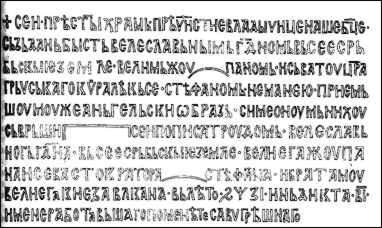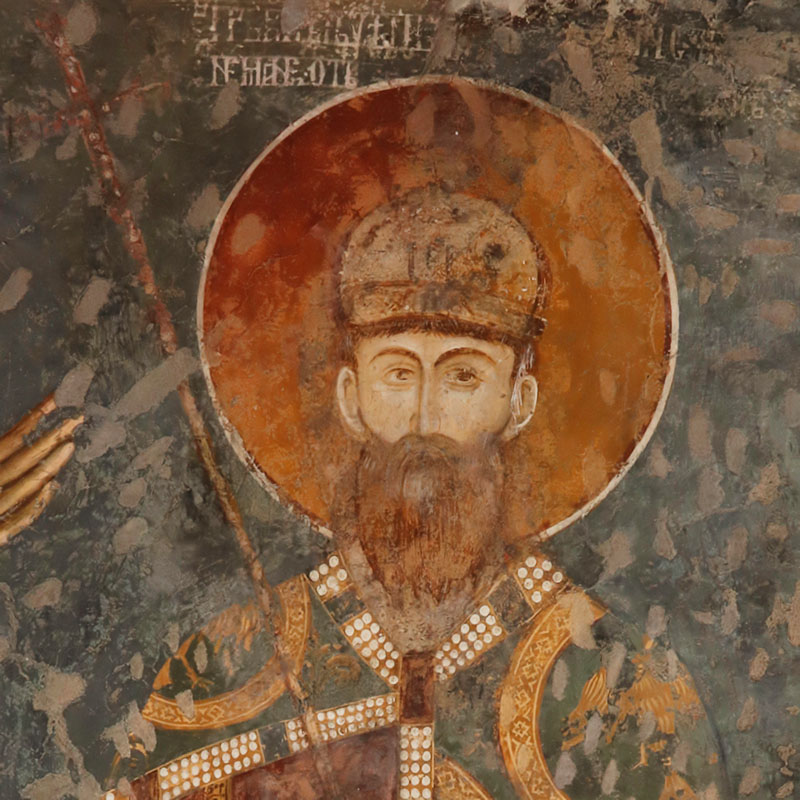Serbian Medieval History
Stefan Prvovenčani (The First-Crowned) (1196 - 1227)
Assumes title King in 1217
As the founder of the Nemanjić dynasty retired to a life of spirituality and reflection, the challenging task of continuing his work fell on his hand-picked successor and middle son, Stefan Nemanjić. Navigating through the often troubled political waters of early 13th century southeastern Europe, Stefan managed during his reign of over 30 years to claim considerable accomplishments, having elevated the state to an internationally recognized and independent kingdom, and the church to an autocephalous archbishopric. However, the reign and deeds of Stefan are also inextricably tied to the name of St. Sava; indeed, the twin state-church achievements of this period were the result of the complementary statesmanship of the two brothers.
Early during Stefan's rule, the international context appeared favorable, as relations with the hitherto main threat - the Byzantine state - were cordial. Solidified by the grand Zupan's marriage to emperor Alexios III's daughter, the former's prestige was further boosted by an unprecedented granting to a foreigner of the high Byzantine title of sebastocrator. But the venerable splendor of the Constantinopolitan court could not mask its decay, and this became painfully evident following its sack by Venetian-sponsored Latin Crusaders (1204). Stefan's problems began even earlier, emanating mainly from Hungary's expansionism, and its overt support for a rebellion by his seemingly disgruntled elder brother Vukan (1202). Having dislodged Stefan as a legitimate Zupan, Vukan ruled under Hungarian suzerainty for a couple of years, but by 1205, with Bulgarian help, Stefan managed to regain the throne, relegating his brother to his traditional Zeta appanage.
It is at this point that the remarkable figure of their third brother, Sava Nemanjic, enters the broader picture. Sava returned to Raska from Mt. Athos in 1207, bringing with him the relics of the holy dynasty's founder, St. Simeon. The relics served as the basis of a lasting peace Sava officiated between the two brothers, and having been laid to rest in the newly expanded and illuminated Studenica monastery, became the center of healing miracles and broad veneration. This phase of Sava's work in Serbia continued for the next 10 years.
![]() POLITICS AND THE SUBLIME, St. Sava's inscription in Studenica.
POLITICS AND THE SUBLIME, St. Sava's inscription in Studenica.
The political climate has changed, Stefan was forced to look westward for the kinds of political support and recognition that his realm required at that point. He remarried, this time to the granddaughter of the old Venetian doge Enrico Dandolo, Ana. Infamous as her grandfather was in connection with the shameful sack of Constantinople, Ana played a respectable role in her new court; the mourning of her death by her son, King Uros I, has been immortalized in one of the more famous frescoes at the Sopocani monastery. Furthermore, Stefan looked to the Pope to get that elusive state symbol - the royal crown. Following customary diplomacy and associated promises of ecclesiastic union with Rome, the coronation did finally take place in 1217, and he is thus referred to as Prvovencani (First-Crowned).
Disgruntled by this dangerous leaning toward the West - or perhaps just inspired to match it with necessary new steps in Church organization - Sava at this point leaves Serbia, only to come back two years later. But this time - having negotiated details with the Constantinopolitan patriarch in Nicean exile - he does so as the head of the newly autocephalous Serbian archbishopric, with its first seat at the famous Zica monastery, erected by Stefan. Sava set up a number of new bishoprics and trained a domestic clergy and church hierarchy, drawing support from the already well-established Serbian monastic communities on Mt. Athos and elsewhere. Sava served in this position until his 1233 retirement in favor of his disciple Arsenije I, upon which he embarked on his second series of travels to the Holy Lands of the East. But just as he strived to unite this medieval Church and State, he harmoniously blended statesmanship with piousness: it remains a puzzle what was it - his skillful diplomacy or the halo and authority of a walking saint - that miraculously averted imminent attacks by Hungarians and Bulgarians during the mid-1210s.
Stefan retired peacefully in 1227, shortly before his death as monk Simeon. His deeds as a statesman were matched by his church-building, and his literary achievements, of which the hagiographic narrative of his father's time - "The Life of St. Simeon" takes key place.
Though hard to summarize, St. Sava's far-reaching legacy nevertheless stems from his ability, at a time of moral and political disarray following the Latin sack of Constantinople, to lay the ground for transforming a limited but important medieval ethnicism into a civilized and self-aware race, adherent to true, universal Christian morality and norms. And although his practical focus was on vigorously implementing this spiritual enlightenment on a national level - his reputation, message, and achievements were to transcend the boundaries of his homeland far and wide.
POLITICS AND THE SUBLIME

Subtle points come to the fore in this inscription commemorating the decoration of the Church of the Holy Virgin in Studenica, in 1208/9. St. Sava, belittling his own role, honors here the efforts of his ruling brothers and father, and in it emphasizes their ties to a deceased Byzantine emperor based on a defunct marriage and court appointment. At a time manifested by the sacking of Constantinople by the Crusaders, when king Stefan Prvovencani was prompted to seek political and family ties in the West, Sava's message appears as a counterbalance to a policy he did not approve of, and eventually, had reversed.
Others
More Information
BLAGO Content
While the content of the BLAGO Fund collections is free to use, there are also some restrictions on commercial use and proper attribution of the material. Follow the links below for more information.
> BLAGO Collections License
> Image Request
BLAGO Fund also accepts the contribution of material. Please contact us with any material you wish to publish on our website.
Contact
BLAGO Fund, Inc.
PO Box 60524
Palo Alto, CA 94306
USA
info@blagofund.org


